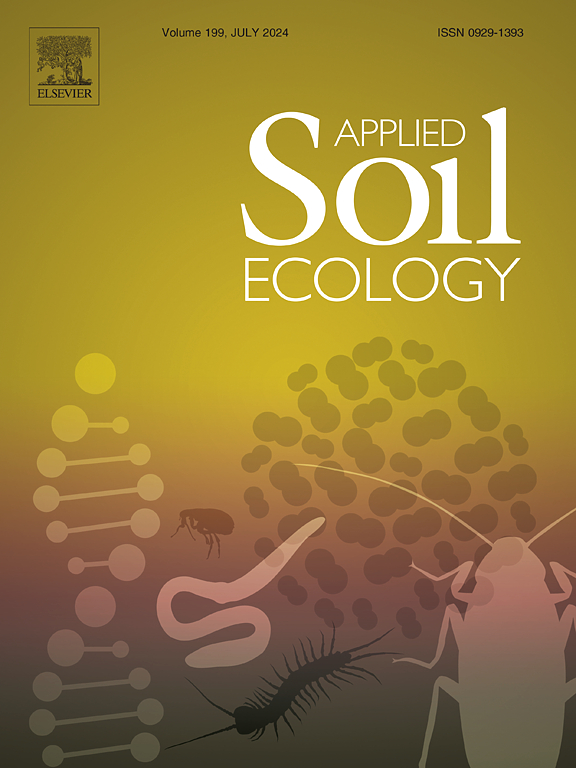Rice rhizosphere and microplastic synergistically reshaping antibiotic resistome in soil
IF 4.8
2区 农林科学
Q1 SOIL SCIENCE
引用次数: 0
Abstract
Whether and how rhizosphere and microplastic amendment together affect antibiotic resistome remain largely unknown. Here, we investigated the dissemination of antibiotic resistance genes (ARGs) in soil and inhabited microplastic when rice growed up with polyethylene microplastic amendment of 50 particle·kg−1 (low) and 200 particle·kg−1 (high). Our findings suggested that a low amount microplastic exhibited a significant effect on soil ARGs, with the significant increase of total abundance from 0.236 to 0.367 in bulk soil and the significant decrease from 0.267 to 0.167 in rhizosphere soil. The combined effect of the high amount microplastic and rhizosphere synergistically promoted ARGs enrichment in inhabited microplastic. For soil and inhabited microplastic, weak co-occurrence of ARGs with bacteria (and metabolites) in rhizosphere compared with bulk soil. Almost every gene occurred a shift in the potential host bacteria from bulk to rhizosphere or from soil to the inhabited microplastic. Most soil bacterium which were positively or negatively correlated with ARGs were regulated by soil metabolites, such as indole-3-acetonitrile, 2,3-Butanediol in bulk soil and octacosane, sulfuric acid, N-Methacryloylglycine in rhizosphere soil. In soil and inhabited microplastic, the variation in ARGs profiles was mainly from the horizontal transfer triggered by mobile genetic elements (MGEs). These findings provide the microbial and metabolic mechanism on reshaping soil ARGs profile in rhizosphere with microplastic presence.

求助全文
约1分钟内获得全文
求助全文
来源期刊

Applied Soil Ecology
农林科学-土壤科学
CiteScore
9.70
自引率
4.20%
发文量
363
审稿时长
5.3 months
期刊介绍:
Applied Soil Ecology addresses the role of soil organisms and their interactions in relation to: sustainability and productivity, nutrient cycling and other soil processes, the maintenance of soil functions, the impact of human activities on soil ecosystems and bio(techno)logical control of soil-inhabiting pests, diseases and weeds.
 求助内容:
求助内容: 应助结果提醒方式:
应助结果提醒方式:


